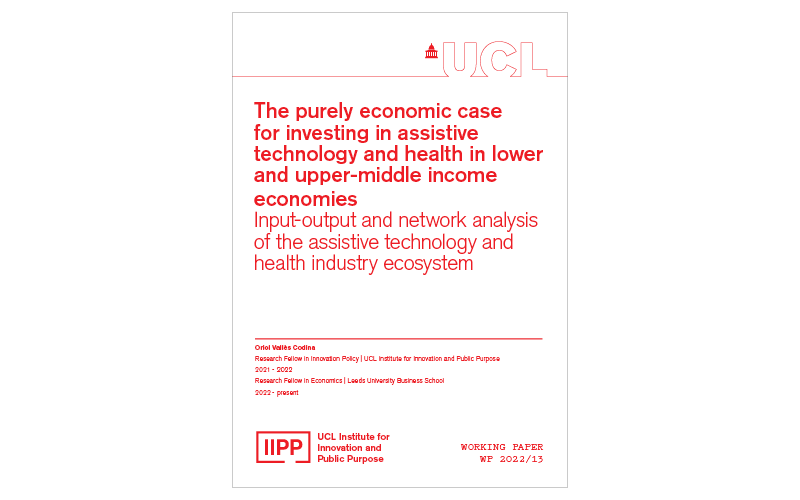The purely economic case for investing in assistive technology and health
This paper analyses the production structure of seven developing economies to highlight the immediate short-term spillovers in output and employment of investing in health for all.

9 August 2022
UCL Institute for Innovation and Public Purpose (IIPP) Working Paper Series: IIPP WP 2022/13
The purely economic case for investing in assistive technology and health in lower and upper-middle income economies: Input-output and network analysis of the assistive technology and health industrial ecosystem.
Authors:
- Oriol Vallès Codina | Research Fellow in Innovation Policy at the UCL Institute for Innovation and Public Pupose (IIPP) [2021-2022] and Research Fellow in Economics, Leeds University Business School.
Reference:
Vallès Codina, O. (2022). The purely economic case for investing in assistive technology and health in lower and upper-middle income economies: Input-output and network analysis of the assistive technology and health industrial ecosystem. UCL Institute for Innovation and Public Purpose, Working Paper Series (IIPP WP 2022-13). Available at: https://www.ucl.ac.uk/bartlett/public-purpose/publications/working-paper....
Acknowledgements:
This research is part of AT2030, a programme funded by UK Aid and led by the Global Disability Innovation Hub which is testing ‘what works’ to improve access to life changing assistive technology. More information at AT2030.org.
Abstract:
As the COVID-19 pandemic has shown, health and assistive technology are not only basic human rights, but also critical for the functioning of all economic activity. Lack of access is especially poignant in low and middle-income countries, exacerbated after decades of cost-minimising austerity policies narrowly aimed at fixing market failures. In line with the market-shaping, mission-oriented approach to innovation policy, this paper applies input-output and network analysis to India, Iran, Mexico, Philippines, South Africa, Ukraine and Uzbekistan to highlight, especially in the upstream channel, the immediate positive spillovers in output, employment, public revenue and productivity of investing in health and assistive technology, and inducing positive demand shocks rippling throughout the whole of the economy by way of the economic interdependencies in the production of intermediate goods. Contrary to their conventional view as unimportant or peripheral industries, these are in fact integral, well-connected and similar to most sectors of the industrial ecosystem, as input-output production features a very hierarchical network structure with few central hubs catering to a wide range of downstream industries producing final goods.
 Close
Close

